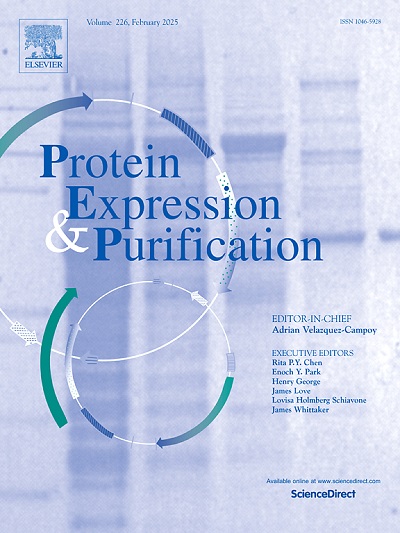一种可扩展的病毒样颗粒纯化的系统方法。
IF 1.2
4区 生物学
Q4 BIOCHEMICAL RESEARCH METHODS
引用次数: 0
摘要
病毒样颗粒(vlp)越来越被认为是有希望的疫苗候选物和药物递送平台,因为它们不含遗传物质,模拟病毒结构,并具有很强的抗原性。各种宿主,包括微生物、酵母和昆虫细胞,通常用于VLP表达。最近,蚕已经成为生产VLPs的重要宿主,为大规模表达提供了一种成本效益高且直接的方法。尽管VLP表达技术取得了进展,但VLP的纯化方法仍处于起步阶段,通常依赖于不可扩展的超离心技术。此外,VLP净化占整体生产成本的很大一部分,这凸显了对高效、可扩展的下游处理方法的迫切需求,以克服当前VLP生产中的挑战。考虑到它们不同的结构和特性,本文系统地总结了包膜和非包膜VLPs可扩展下游工艺的已发表结果。它的目的是提供一个全面的概述,并显著有助于发展未来的VLP生产制药应用,从而指导和激励进一步的研究在这一领域。本文章由计算机程序翻译,如有差异,请以英文原文为准。
A systematic approach for scalable purification of virus-like particles
Virus-like particles (VLPs) are increasingly recognized as promising vaccine candidates and drug-delivery platforms because they do not contain genetic materials, mimic viral structures, and possess strong antigenic properties. Various hosts, including microorganisms, yeast, and insect cells, are commonly used for VLP expression. Recently, silkworms have emerged as a significant host for producing VLPs, providing a cost-effective and straightforward approach for large-scale expression. Despite the progress in VLP expression technology, purification methods for VLPs are still in their infancy and often rely on unscalable ultracentrifugation techniques. Moreover, VLP purification represents a substantial portion of the overall production cost, highlighting the urgent need for efficient and scalable downstream processing methods to overcome the current challenges in VLP production. Considering their differing structures and properties, this review systematically summarizes the published results of scalable downstream processes for both enveloped and non-enveloped VLPs. Its aim is to provide a comprehensive overview and significantly contribute to developing future VLP production for pharmaceutical applications, thereby guiding and inspiring further research in this field.
求助全文
通过发布文献求助,成功后即可免费获取论文全文。
去求助
来源期刊

Protein expression and purification
生物-生化研究方法
CiteScore
3.70
自引率
6.20%
发文量
120
审稿时长
32 days
期刊介绍:
Protein Expression and Purification is an international journal providing a forum for the dissemination of new information on protein expression, extraction, purification, characterization, and/or applications using conventional biochemical and/or modern molecular biological approaches and methods, which are of broad interest to the field. The journal does not typically publish repetitive examples of protein expression and purification involving standard, well-established, methods. However, exceptions might include studies on important and/or difficult to express and/or purify proteins and/or studies that include extensive protein characterization, which provide new, previously unpublished information.
 求助内容:
求助内容: 应助结果提醒方式:
应助结果提醒方式:


